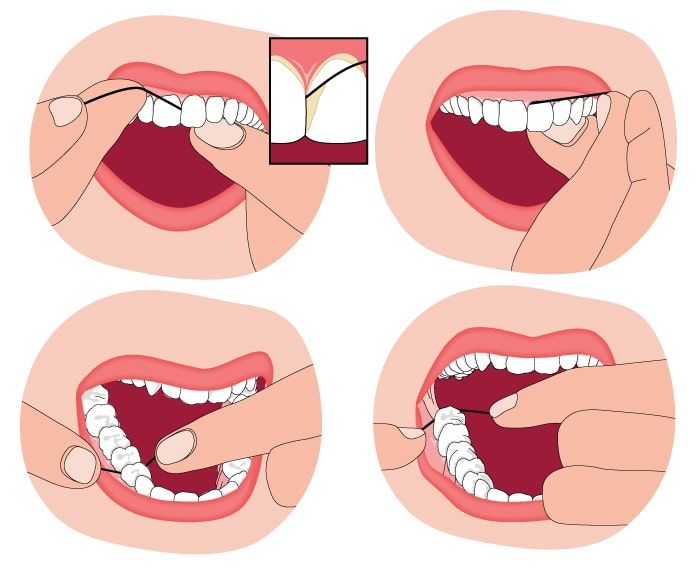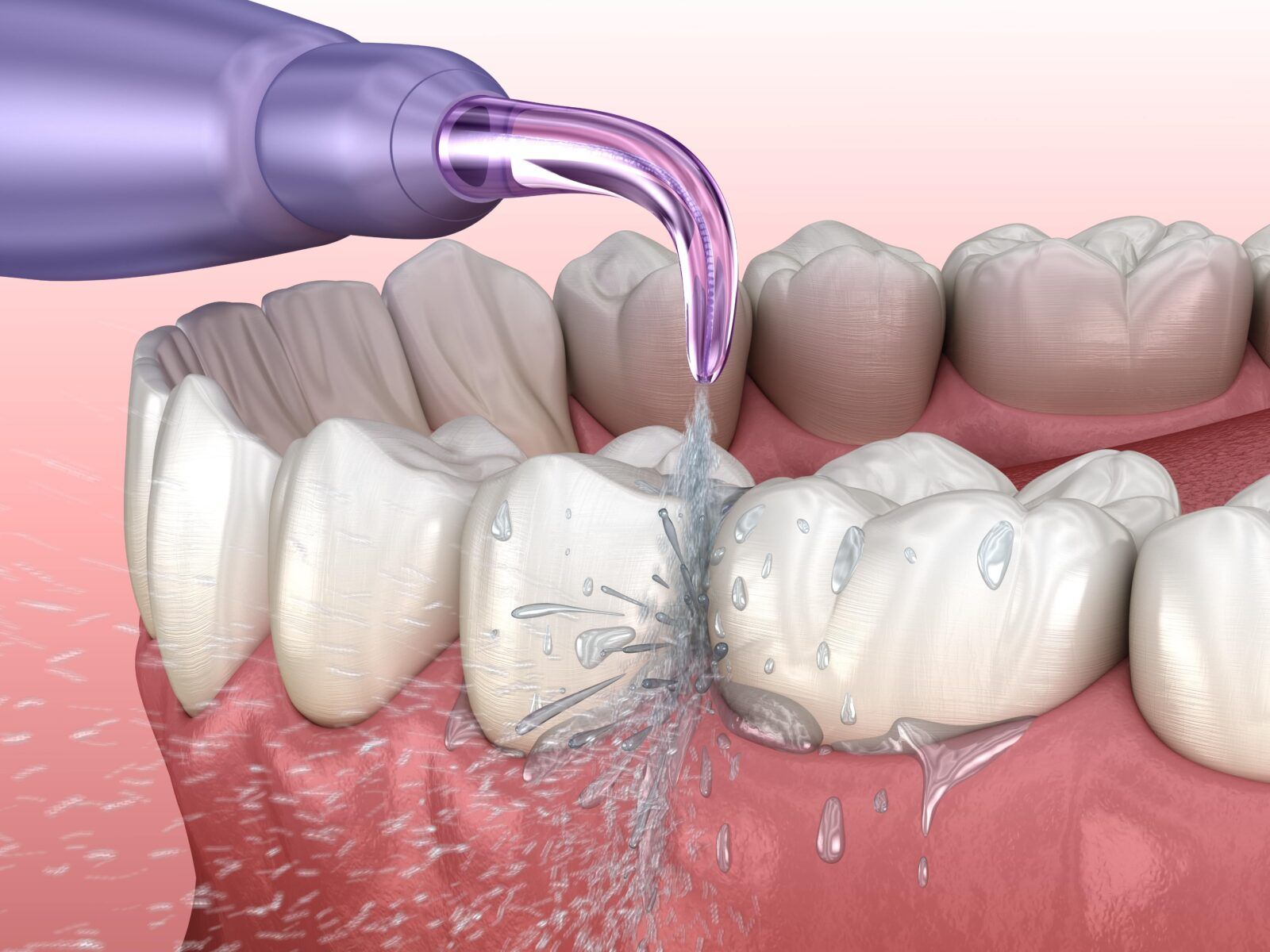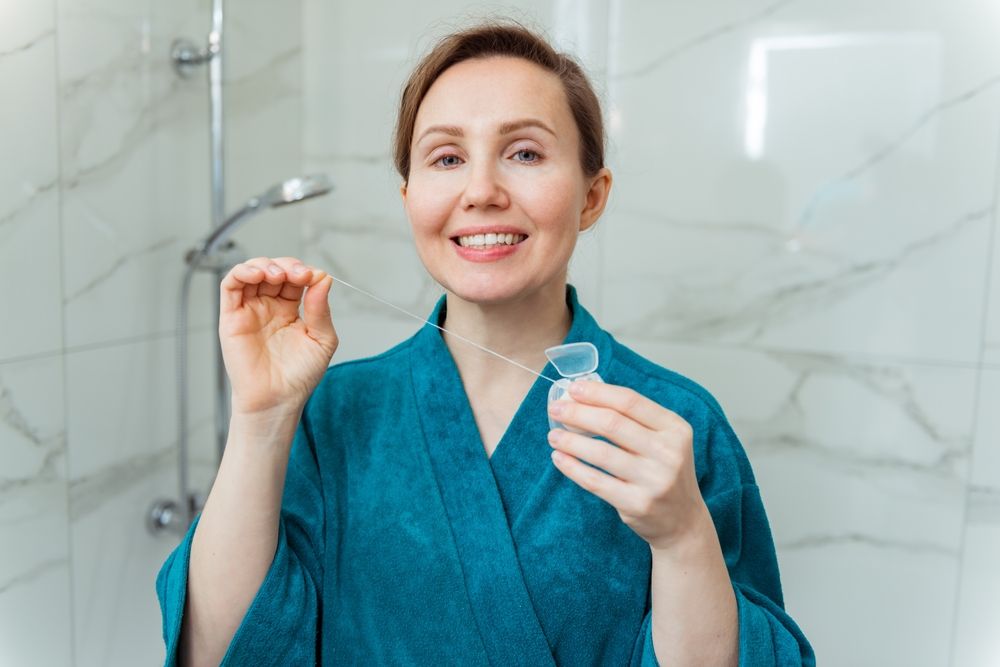Welcome to our comprehensive dental blog, where we explore the remarkable world of dental floss! Dental floss is much more than just a simple thread; it’s a powerful tool that plays a significant role in both general and cosmetic dentistry. In this article, we’ll uncover fascinating facts about dental floss, its benefits, and how it can contribute to maintaining your oral health and enhancing your smile.
Flossing–The Basics
Flossing is an essential part of maintaining good oral health. The American Dental Association (ADA) recommends flossing once a day. Flossing daily helps remove plaque and food particles from between your teeth and along the gumline, areas that your toothbrush may not reach effectively.
The best time to floss is whenever it fits into your daily routine and allows you to do it thoroughly. Some people prefer to floss in the evening before brushing their teeth, while others find it more convenient to floss after meals. The key is to be consistent and make it a daily habit. Whether you choose morning, afternoon, or evening, the important thing is that you take the time to floss every day.
Here’s a simple step-by-step routine to follow:

- Take a piece of dental floss about 18 inches long (roughly the length from your fingertips to your elbow).
- Gently slide the floss between your teeth, using a back-and-forth motion. Be careful not to snap the floss into your gums, as this can cause irritation.
- Curve the floss into a “C” shape around each tooth and slide it up and down along the sides of the tooth. This helps to clean both the tooth surface and the area just below the gumline.
- Use a clean section of the floss for each tooth to avoid transferring bacteria.
- Once you’ve finished flossing, rinse your mouth with water or mouthwash to wash away any loosened debris.
- Brush your teeth afterward to complete your oral care routine.
Remember, flossing is just as important as brushing in maintaining a healthy smile and preventing dental issues like cavities and gum disease. Make it a habit, and your teeth and gums will thank you!
Flossing with Braces or Other Dental Restorations
Flossing with braces or dental restorations requires some adjustments to your flossing technique to ensure effective cleaning without damaging the appliances or restorations. Here’s how to floss with braces or dental restorations:

- Use Special Tools: Instead of traditional dental floss, consider using orthodontic floss threaders, interdental brushes, or floss picks. These tools are designed to work around braces and dental work.
- Thread the Floss: If you’re using orthodontic floss threaders, first, thread the floss through the loop of the threader. Then, carefully pass the threader under the main wire of your braces, bringing the floss between your teeth.
- Floss Gently: Glide the floss up and down between two teeth, making sure to go beneath the gumline. Be gentle to avoid damaging the braces or restorations.
- Slide Along the Wire: For braces, carefully slide the floss along the wire to clean between each bracket and the tooth surface. Take your time to ensure thorough cleaning.
- Consider Floss Threaders or Super Floss: Super floss is a specialized floss with a stiff end, making it easier to thread under braces’ wires. Floss threaders also work well for getting the floss underneath the wires.
- Water Flossers: Water flossers can be useful for cleaning around braces and dental restorations. They use a stream of water to remove debris between teeth and along the gumline.
- Take Your Time: Flossing with braces or dental restorations may take a bit longer, but it’s essential to be thorough. Take your time to ensure all areas are adequately cleaned.
Floss Facts
- The Ancient Origins of Dental Floss: Believe it or not, dental floss dates back to ancient times. Different cultures used various materials like horsehair, silk, and plant fibers for flossing.
- Dental Floss and Gum Health: One of the key advantages of dental floss is its ability to prevent gum disease. Flossing effectively removes plaque and bacteria from between your teeth and along the gumline, reducing the risk of gingivitis and periodontal problems.
- Flossing for Fresh Breath: Bad breath can be a social nightmare. Flossing helps combat halitosis by eliminating the hidden food particles and bacteria responsible for unpleasant odors.
- The Link Between Flossing and Heart Health: Recent research has uncovered a surprising connection between oral health and heart health. Studies that suggest regular flossing can potentially reduce the risk of heart disease.
- Achieving a Dazzling Smile with Dental Floss: Cosmetic dentistry isn’t just about whitening treatments or veneers. In fact, flossing contributes to a stunning smile by ensuring healthy gums, preventing gum recession, and maintaining the supportive structures around your teeth.
The Diverse World of Dental Floss:
Here’s a table explaining the different types of dental floss:
| Type of Dental Floss | Description | Best for | Pros | Cons |
| String Floss | Traditional thin string made of nylon or Teflon | Most users | Effective, affordable, widely available | Can be difficult for some to handle |
| Dental Tape | Wider, flat ribbon-like floss | Wider gaps between teeth | Easy to use, great for larger spaces | May shred or fray in tight spaces |
| Floss Picks | Floss on a small plastic handle | On-the-go flossing | Convenient, portable, single-use | May not reach all areas effectively |
| Super Floss | Thick spongy floss with a stiff end | Braces and bridges | Cleans around dental work, easy to grip | Not suitable for regular flossing |
| Water Flosser | Uses a stream of water to clean between teeth | Gum sensitivity | Gentle on gums, easy to use | More expensive, requires electricity |
| Silk Floss | Made from natural silk fibers | Eco-conscious users | Biodegradable, gentle on gums | Can be more expensive than nylon floss |
| Flavored Floss | Infused with various flavors like mint or fruit | Kids and flavor lovers | Makes flossing more enjoyable | Some flavors may contain artificial ingredients |
Remember, the best type of dental floss for you depends on your individual preferences, the spaces between your teeth, and any specific dental needs you may have. Don’t forget to ask your dentist for recommendations on the most suitable floss for your smile!
In Conclusion:
Dental floss is an unsung hero in the world of dentistry, offering numerous benefits for both general and cosmetic oral care. From maintaining healthy gums to achieving a dazzling smile, the power of flossing cannot be underestimated. Embrace this simple yet effective tool, and make it an essential part of your daily oral hygiene routine. Your teeth, gums, and smile will thank you for it!




